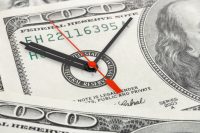 Human nature is a strange and wonderful thing, don’t you think? When times are tough, we cannot wait until they become easier. When they become easier, we worry about the next tough time or experience. Lots of investors are feeling that latter one today.
Human nature is a strange and wonderful thing, don’t you think? When times are tough, we cannot wait until they become easier. When they become easier, we worry about the next tough time or experience. Lots of investors are feeling that latter one today.
As I write this on Tuesday, July 25, the S&P 500 index is at a record high (2,479.45) while the Dow 30 index is just a quarter percent below its record. (TC2000 software, Worden Brothers, Inc., 2017) Meanwhile, the US Navy warns Iran by a shot across the bow, Chinese jets buzz a US reconnaissance plane, and Kim Jong Un’s aerospace slaves are working feverishly to produce a missile able to cause us mass destruction. Throw these things in a bag and have a nice day!
While not original from me, I am constantly reminded that our world of finance–life itself–is never quite as good as it seems in best times or as bad as it seems in toughest times. Where are we today as it concerns the US financial world?
Our stock market has run generally upward since the low of March 9, 2009, 8 years and four months ago. That is not a record, but it is a long time with only one decline of 20 percent or more, in mid-2011.
Many have predicted an impending recession along the way, but no period of two consecutive shrinking quarters has appeared. Instead the economy has limped along at a rate of barely 2 percent growth per year. Since the election, stock indexes have risen from productivity and profit growth. It appears second quarter profits will be higher by at least 8 percent over last year.
Sometime, maybe even in the next few months, stock prices are likely to fall back and take a breather. Fundamentally there is not much reason for a major drop now. But based on historical data, a sizeable correction could come during the summer or fall of 2018. Whenever something like that occurs, active managers and investors take advantage of them to protect and grow assets on a relative basis.
For its part, the Federal Reserve, as physician, is still regularly bleeding the patient with its zero-interest rate policy (ZIRP). Its proof of effectiveness? The patient is still alive. Its spokesperson, Janet Yellen, has assured us for years it will return interest rates to normal, if the patient will just get up and run like a healthy person. It will know the right conditions when it sees the perfect data. A growing number of observers seriously doubt that.
My plea is that the Fed stop bleeding the savers to favor the billionaire borrowers!
If you’re a borrower, there is good news and bad news. Only 550 pound Uncle Sam continues to skyrocket the national debt. Thankfully, most of our citizenry is too smart to try this at home. Our debt ratio to disposable income has fallen back to 10.04 percent, 4.42 for mortgages and 5.63 for consumer debt. This is on the low side since 1980. See www.federalreserve.gov/releases/housedebt/. As for the bad news, borrowers, pull up www.usdebtclock.org/ and watch the numbers roll. The clock is running so fast, I think it may show $19.967 Trillion by Wednesday when this is published.
What is the bottom line? Life is uncertain. You have only a few choices regarding money. You can keep it, spend it on stuff, give it to charities, pay taxes, lend it, or own companies and employ people with it. My best advice is that we keep rising, work at helping others, and do the best we can to improve the lot of ourselves, our families, communities and our world.
(Past performance is no guarantee of future results. Advice is intended to be general in nature.)
